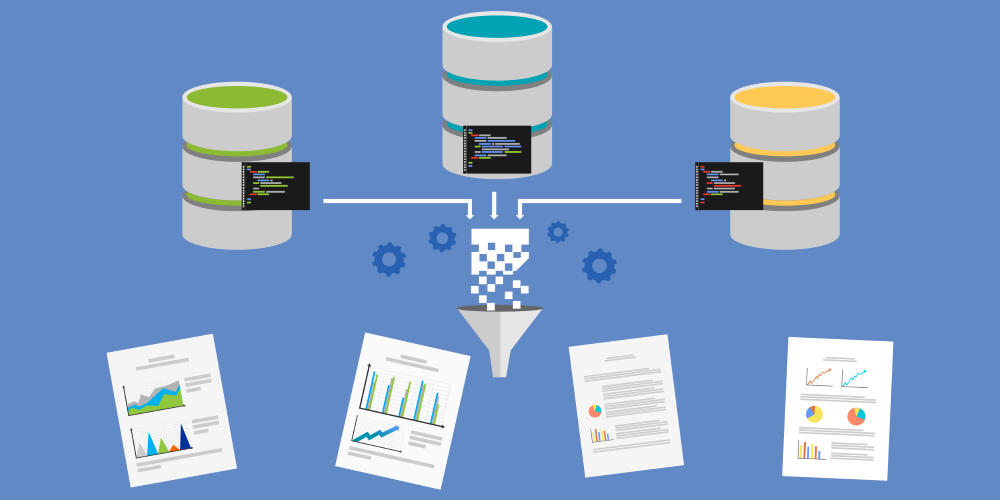How Effective is AP Automation? Using Intelligent Data Recognition to Achieve Success

The Growing Importance of AP Automation
Accounts Payable (AP) automation has streamlined invoice processing, reduced errors, and provided impactful financial returns for countless organizations, making it a powerful tool for modern businesses to stay competitive. In fact, an AIIM survey estimated that 29% of respondents saved 50% or more on invoice processing from their solutions. This estimate is bolstered by the top and bottom accounts payable performer data in (Figure 1).
Figure 1
Adopting technology is only part of the equation for achieving effective results from automation. Using the right processes that are optimal for your organization’s goals, especially when capturing invoices, purchase orders, and other transaction documents, will maximize the implementation’s results. In this blog post, we’ll explore what makes AP automation truly effective and how using optimal processes, especially around document capture, can set organizations up for success.
Using Intelligent Data Recognition
Intelligent Data Recognition (IDR) is revolutionizing how businesses manage document-heavy processes that use varying formats, such as accounts payable. By combining advanced technologies such as OCR, AI, and machine learning, IDR enables organizations to streamline workflows, save time, reduce errors, and achieve significant cost savings. Let’s explore these benefits a little more.
Benefits of IDR Solutions
Successful accounts payable automation takes many forms. Understanding your goals will allow you to implement automation efforts that optimize your processes and meet those goals.
Reduced Invoice Processing Time:
Automation can drastically shorten invoice process times for enhanced productivity, more timely payments, better vendor relationships, and greater cost savings.
Error Reduction:
Automating data entry minimizes errors that frequently occur with manual entry. By shifting these efforts away from entry and towards quality assurance, organizations can save time and costs related to error correction and reduce liabilities.
Cost Savings:
By streamlining the way organizations do business, they can save on administrative costs and take advantage of early payment discounts.
Factors That Influence IDR Outcomes in Accounts Payable
The benefits of Intelligent Data Recognition depend on several factors, the most crucial of which are the scale, industry, and integration potential of the solution you plan to implement.
Company Size and Invoice Volume:
Growing organizations handling high volumes of invoices, especially 50 or more a day, will see greater returns on IDR. The increased productivity provides an outstanding return on investment. Our ROI calculator helps you estimate this factor.
Industry-Specific Needs:
Certain industries, like manufacturing or healthcare, may require more customization in their solution and processes, leading to higher implementation costs and times. This can affect the immediacy of your ROI, but the intangible benefits and eventual savings will still be visible. A provider that takes a comprehensive approach to IDR, using AI, machine learning, and strategic processes, will be able to successfully meet these industry needs.
Integration Readiness:
Organizations that integrate IDR with other solutions experience enhanced benefits such as greater information access and an increased ROI. Providers that are experienced in integrating with your solutions may be able to provide shorter implementation times, so it’s important to research what integrations each provider has worked with and what other services the provider can offer directly.
The Importance of Using the Right Processes
Automation Alone Isn’t Enough: Optimizing Processes First
Before implementing Intelligent Data Recognition, businesses must understand their documents and how data entry processes will need to be altered. Understanding current inefficiencies includes:
- Mapping out current workflows
- Establishing what documents will be captured
- Discussing potential capture avenues with providers
- Working with the selected provider to scope out a solution
Taking these steps and inviting an implementation specialist from your provider will allow for feedback on how these standardized processes will work with automation.
Aligning Automation Goals with Business Objectives
AP automation efforts must also align with broader organizational goals such as:
- Reducing payment cycles to improve cash flow
- Enhancing vendor relationships through timely and accurate payments
- Ensuring compliance with industry regulations and internal policies
Understanding these overarching needs, in addition to those of your payables department, will give you greater guidance in choosing a solution that will benefit your entire business. This may also open up opportunities to scale the solution to other departments.
Building Flexibility into AP Workflows
AP automation must be capable of handling outliers in your processes. This includes scenarios such as invoice disputes or irregular payment terms. Flexible workflows ensure that:
- Exceptions are flagged for review without disrupting the overall process
- Human oversight is a seamless part of your automated workflows
- Data is validated for reliability, especially when being used for financial systems
- Corrections to automated data entry can be easily made for greater future accuracy
Key Features of a Successful IDR System
A Comprehensive Approach
Advanced Intelligent Data Recognition combines technologies like Optical Character Recognition (OCR), AI, and machine learning in strategic ways to automatically:
- Extract data from documents with extraordinarily high accuracy
- Match documents like purchase orders and receipts, reducing manual efforts
- Archive transaction records for retention compliance
- Fuel financial systems with valuable transaction information
Seamless Integration with Existing Systems
Effective IDR systems integrate with existing accounting and Enterprise Resource Planning (ERP) platforms, enabling:
- Real-time data synchronization across systems
- End-to-end visibility into financial data and workflows
- Simplified reporting and auditing capabilities
Real-Time Reporting and Analytics
Analytics tools within IDR platforms provide actionable insights, such as:
- Resources used within the capture processes
- Any breaks or bottlenecks in workflows that need to be remediated
- Process efficiencies and areas for improvement
In Summary
Intelligent Data Recognition can be a highly effective tool for enhancing savings, productivity, employee and partner satisfaction, and more. However, to achieve these results, it must be paired with strategically planned processes that maximize the technology’s potential. Square 9 provides flexible solutions that adhere to best practices and highly experienced professional services that will help you explore these processes throughout your implementation.
How Square 9 Can Help
Square 9 is a leading provider of AI-powered intelligent information management solutions that take the paper out of work and make it easier to get things done. With digital workflows that automate many aspects of how you work today, we make it easy by extracting information from scans or PDFs, storing documents in a searchable archive, and building digital twins of your current processes through graphical workflows.


